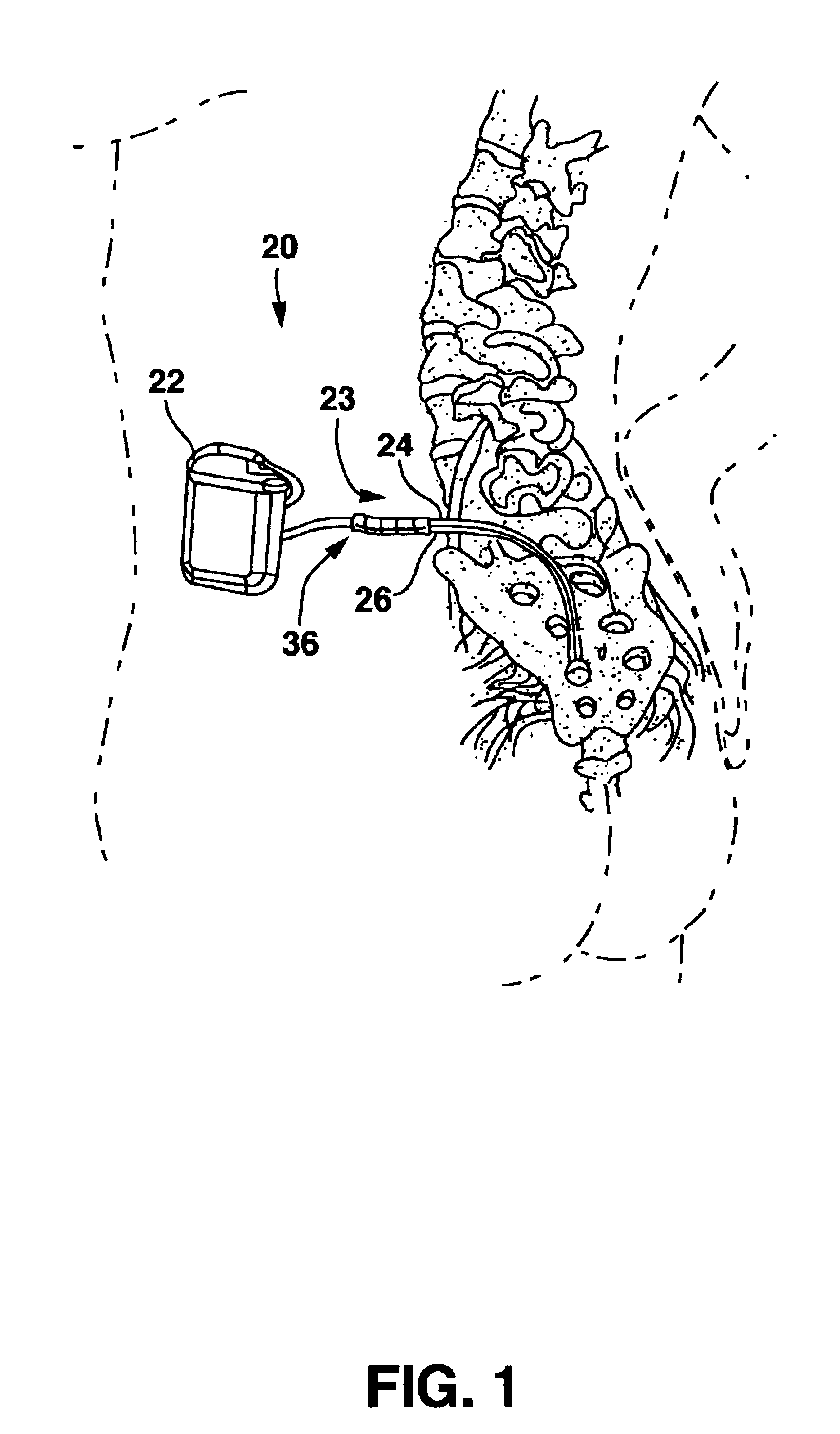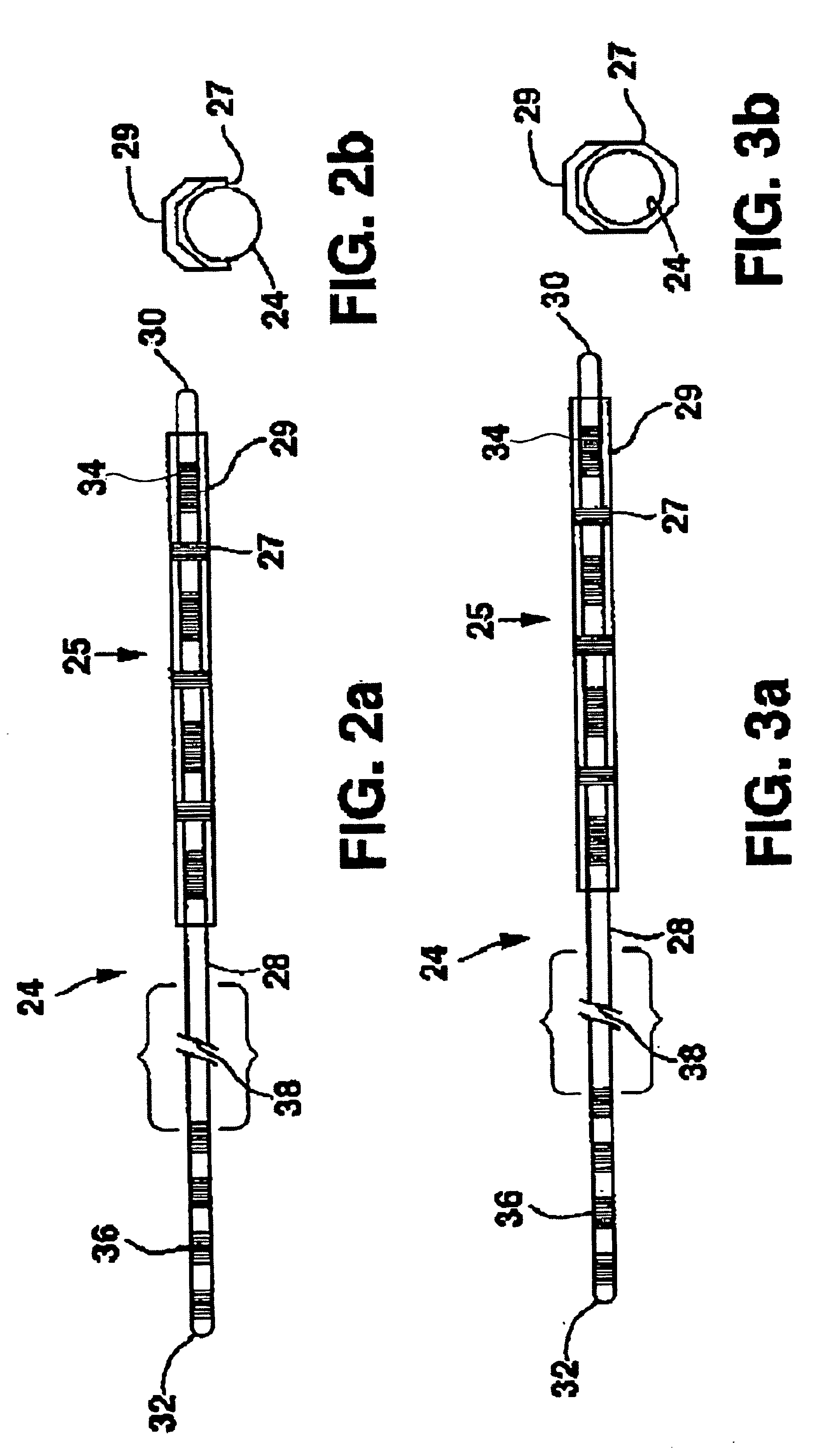Implantable percutaneous stimulation lead with lead carrier
a percutaneous stimulation and lead carrier technology, applied in the field of medical devices, can solve the problems of difficult to control the relative position of the two leads with respect to one another, unsatisfactory stimulation, and inability to achieve the effect of facilitating the flow of current into the anatomy of the patien
- Summary
- Abstract
- Description
- Claims
- Application Information
AI Technical Summary
Problems solved by technology
Method used
Image
Examples
Embodiment Construction
[0021]FIG. 1 shows an environment of an implantable neurological stimulation system 20. The implantable neurological stimulation system 20 comprises an implantable neurological stimulator 22, a stimulation lead with lead carrier 23, a first lead body 24, and a second lead body 26. The implantable neurological stimulator 22 provides a programmable stimulation signal that is delivered to a desired location or target to stimulate selected nerves or muscle tissue. The implantable neurological stimulator 22 is typically implanted in a subcutaneous pocket around the upper buttocks sometime after the stimulation lead has been implanted and its effectiveness verified. The implantable percutaneous stimulation lead with lead carrier would be particularly relevant for spinal cord stimulation therapies to treat pain. For a spinal cord therapy the implantable percutaneous stimulation lead with lead carrier would typically be inserted into the epidural space through a large gauge epidural needle....
PUM
 Login to View More
Login to View More Abstract
Description
Claims
Application Information
 Login to View More
Login to View More - R&D
- Intellectual Property
- Life Sciences
- Materials
- Tech Scout
- Unparalleled Data Quality
- Higher Quality Content
- 60% Fewer Hallucinations
Browse by: Latest US Patents, China's latest patents, Technical Efficacy Thesaurus, Application Domain, Technology Topic, Popular Technical Reports.
© 2025 PatSnap. All rights reserved.Legal|Privacy policy|Modern Slavery Act Transparency Statement|Sitemap|About US| Contact US: help@patsnap.com



